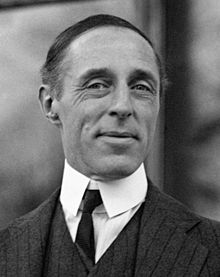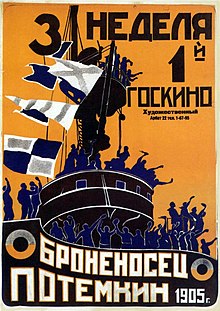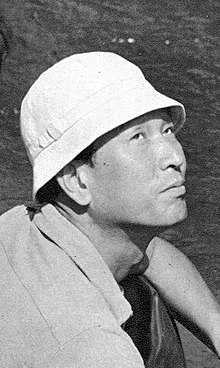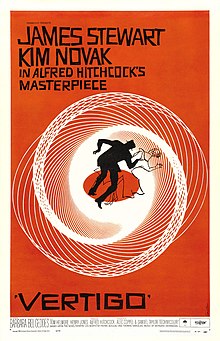10 Movie Makers Who Pioneered the Film Industry
Introduction
The film industry has evolved tremendously since its inception, and we owe much of its progress to visionary pioneers who paved the way for cinematic excellence. These trailblazing movie makers revolutionized storytelling techniques, introduced groundbreaking technologies, and set new standards for the art of filmmaking. In this article, we highlight 10 influential individuals who were among the first in their field, shaping the landscape of the movie industry as we know it today.
1. Georges Méliès
Georges Méliès, a French filmmaker, is widely regarded as the pioneer of visual effects and fantasy films. He experimented with innovative techniques such as multiple exposures, stop-motion animation, and hand-painted color to create enchanting and imaginative stories. His iconic film, "A Trip to the Moon" (1902), remains a landmark in cinematic history.
The film showcases Méliès' innovative use of special effects, with imaginative scenes depicting the rocket launch, the astronomers' encounter with moon inhabitants, and their triumphant return to Earth. Despite its limited runtime of just over 12 minutes, "A Trip to the Moon" captivated audiences with its whimsical storytelling and visually stunning sequences.
Méliès, who also starred in the film as the main astronomer, utilized hand-painted color techniques and creative set designs to bring his imaginative vision to life. The film's iconic image of a rocket lodged in the moon's eye has become an enduring symbol of early cinema.
"A Trip to the Moon" holds a significant place in film history as one of the earliest examples of narrative storytelling through motion pictures. It has influenced generations of filmmakers and continues to be celebrated for its technical achievements and imaginative storytelling.
2. Thomas Edison
Thomas Edison, known for his numerous inventions, made significant contributions to the development of motion pictures. He invented the Kinetoscope, an early motion picture device, and established the first motion picture production studio in the United States.
Edison's studio produced numerous short films, capturing everyday scenes and events. It allowed people to experience the magic of moving images for the first time, creating a new form of popular entertainment. The films shown on the Kinetoscope featured a variety of subjects, including scenes from everyday life, comedy sketches, and short narratives.
The Kinetoscope quickly gained popularity and became a sensation in amusement parlors, attracting audiences eager to witness this groundbreaking technological marvel. It paved the way for the emergence of the film industry and laid the foundation for future innovations in cinema.
While the Kinetoscope was primarily a viewing device, it played a crucial role in the evolution of filmmaking. It inspired filmmakers to explore new storytelling techniques and experiment with different camera angles, editing, and narrative structures.
Although the Kinetoscope eventually became obsolete due to the rise of projection-based film systems, its impact on the history of cinema is undeniable. It paved the way for the development of movie theaters, film projectors, and the widespread distribution of films to larger audiences.
Today, the Kinetoscope is remembered as a groundbreaking invention that brought the magic of moving images to the masses and set the stage for the incredible advancements that followed in the world of cinema.
3. D.W. Griffith
D.W. Griffith is renowned for his influential role in the development of film grammar and narrative techniques. His groundbreaking film, "The Birth of a Nation" (1915), introduced innovative editing methods and cinematic storytelling approaches that shaped the future of filmmaking.
"The Birth of a Nation" is a groundbreaking and controversial silent film released in 1915. Directed by D.W. Griffith, the film tells the story of two families during the American Civil War and the Reconstruction era that followed. It is known for its technical innovations, epic scope, and controversial depiction of race.
"The Birth of a Nation" is considered a landmark in the history of cinema for its significant contributions to film language and narrative techniques. It introduced groundbreaking techniques such as close-ups, parallel editing, and complex storytelling. The film's massive scale and ambitious storytelling captivated audiences and set new standards for filmmaking.
However, "The Birth of a Nation" is also notorious for its racist and distorted portrayal of African Americans. The film perpetuated harmful stereotypes and glorified the Ku Klux Klan, presenting them as heroes. Its release sparked protests and debates about the representation of race in film and its potential impact on society.
Despite its controversial content, "The Birth of a Nation" had a profound influence on the film industry. It demonstrated the power of cinema as a storytelling medium and pushed the boundaries of what was possible in filmmaking. It paved the way for future filmmakers to experiment with narrative techniques, visual storytelling, and the use of film as a means of social commentary.
While "The Birth of a Nation" remains a significant film in terms of its impact on the history of cinema, it is important to acknowledge and critically examine its problematic aspects. The film's legacy is a complex and controversial one, reflecting both its technical achievements and its harmful portrayal of race.
Today, "The Birth of a Nation" serves as a reminder of the need for responsible and inclusive storytelling in cinema, as well as the ongoing discussions surrounding representation and racial sensitivity in the film industry.
4. Charlie Chaplin
Charlie Chaplin, a comedic genius, was one of the earliest stars of silent cinema. He pioneered the art of physical comedy and brought laughter to audiences worldwide through his iconic character, "The Tramp." Chaplin's films, such as "City Lights" (1931) and "Modern Times" (1936), continue to be celebrated for their timeless humor and social commentary.
Charlie Chaplin, born on April 16, 1889, in London, England, was a legendary figure in the world of cinema. He is best known for his iconic character "The Tramp," a lovable and comedic vagabond with a distinctive mustache, bowler hat, and cane.
Chaplin's career spanned the silent film era and the early years of sound cinema, and he became one of the most influential and beloved actors of his time. He wrote, directed, produced, and starred in numerous films, showcasing his remarkable talent for physical comedy and his ability to elicit laughter and emotions from audiences around the world.
Some of Chaplin's most notable films include "The Kid" (1921), "City Lights" (1931), "Modern Times" (1936), and "The Great Dictator" (1940). These films not only showcased Chaplin's comedic brilliance but also addressed social and political issues of the time, such as poverty, industrialization, and fascism.
Chaplin's performances were characterized by his expressive facial expressions, graceful physical movements, and heartfelt portrayals of the human condition. He had a unique ability to blend comedy and pathos, creating a timeless and universal appeal that resonated with audiences of all backgrounds.
Despite the challenges of transitioning from silent films to talkies, Chaplin successfully adapted to the changing times and continued to create memorable and critically acclaimed films. He received numerous awards and honors throughout his career, including an honorary Academy Award for his contributions to the film industry.
Beyond his on-screen success, Chaplin was also known for his activism and social commentary. He used his platform and influence to speak out against social injustice and advocate for peace, earning him both admiration and controversy.
Charlie Chaplin's impact on the world of cinema is immeasurable. His films continue to be celebrated and studied, and his influence can be seen in the work of countless actors and filmmakers who followed in his footsteps. His timeless comedy and poignant storytelling continue to entertain and inspire audiences, making him an enduring icon of the silver screen.
5. Sergei Eisenstein
Sergei Eisenstein, a Soviet filmmaker, is renowned for his contributions to film theory and montage editing techniques. His films, including "Battleship Potemkin" (1925) and "Strike" (1925), showcased his innovative use of montage to create emotional impact and convey powerful messages.
"Battleship Potemkin" (1925): This film tells the story of the 1905 Russian Revolution and the mutiny on the battleship Potemkin. It is renowned for its innovative editing techniques, particularly the use of montage, which Eisenstein used to create emotional and political impact. The film's most famous sequence is the Odessa Steps sequence, which depicts a massacre of civilians by soldiers. This sequence is considered one of the most influential and iconic scenes in film history.
Strike" (1925): "Strike" is Eisenstein's debut feature film and is a powerful portrayal of a strike by factory workers. The film explores themes of social inequality, exploitation, and worker solidarity. Eisenstein employed a dynamic and expressive visual style, using bold compositions and striking imagery to convey the intensity and drama of the workers' struggle.
Both "Battleship Potemkin" and "Strike" are notable for their use of Eisenstein's theory of montage, in which the juxtaposition of images creates a new meaning and emotional impact. This approach revolutionized film editing and had a profound influence on future filmmakers. Eisenstein's films were characterized by their strong political messages and their ability to engage and inspire audiences.
These films not only had a significant impact on the history of cinema but also served as powerful tools for social and political commentary. Eisenstein's work challenged conventional storytelling techniques and pushed the boundaries of cinematic expression, paving the way for future filmmakers to explore new possibilities in visual storytelling.
Today, "Battleship Potemkin" and "Strike" continue to be celebrated for their artistic and historical importance. They are regarded as seminal works in the development of cinema and are studied and appreciated by film scholars, students, and enthusiasts worldwide.
6. Walt Disney
Walt Disney revolutionized animation and introduced the concept of feature-length animated films to mainstream audiences. With the release of "Snow White and the Seven Dwarfs" (1937), Disney established his animation studio as a leader in the industry and paved the way for countless beloved animated films.
1. Animation Innovation: "Snow White and the Seven Dwarfs" introduced groundbreaking techniques in animation. It was the first film to use hand-drawn animation for a feature-length production, with intricate details and fluid movements. The film's use of multiplane camera technology allowed for depth and dimension in the animated scenes, enhancing the visual experience for audiences.
2. Fairy Tale Adaptation: The film is based on the German fairy tale by the Brothers Grimm. It tells the story of Snow White, a princess who befriends seven dwarfs while escaping the wicked Queen's attempts to harm her. The timeless tale of good versus evil, combined with memorable characters and catchy songs, resonated with audiences of all ages and established the foundation for Disney's future storytelling prowess.
3. Box Office Success: Upon its release, "Snow White and the Seven Dwarfs" became a major box office hit, defying initial skepticism about the viability of a feature-length animated film. Its success paved the way for the subsequent golden age of Disney animation and inspired other studios to produce animated films for a wider audience.
4. Cultural Impact: The film's success extended beyond the box office. It captured the hearts of viewers worldwide and became a cultural phenomenon. Snow White and the dwarfs, such as Dopey, Grumpy, and Doc, became iconic characters in the Disney pantheon, beloved by generations of fans. The film's enchanting story, memorable songs like "Heigh-Ho" and "Some Day My Prince Will Come," and timeless themes of love, friendship, and bravery have contributed to its enduring popularity.
5. Animation Legacy: "Snow White and the Seven Dwarfs" laid the foundation for Disney's animation legacy. It set a high standard for quality animation and storytelling, which the studio has continued to uphold throughout its history. The film's success also paved the way for future Disney classics, including "Cinderella," "Beauty and the Beast," and "The Lion King."
Today, "Snow White and the Seven Dwarfs" is regarded as a milestone in animation history and is celebrated for its technical achievements, storytelling, and enduring charm. It continues to enchant audiences of all ages, reminding us of the timeless magic and impact of animated storytelling.
7. Akira Kurosawa
Akira Kurosawa, a Japanese filmmaker, is celebrated for his masterful storytelling and visual craftsmanship. He introduced Japanese cinema to the world stage and influenced generations of filmmakers with his films, including "Seven Samurai" (1954) and "Rashomon" (1950).
"Seven Samurai" (1954) is a masterpiece of Japanese cinema directed by Akira Kurosawa. It is widely regarded as one of the greatest films ever made and has had a profound influence on filmmaking around the world. Here are some key aspects of its significance:
1. Genre Redefinition: "Seven Samurai" redefined the samurai film genre, introducing a more realistic and character-driven approach. Kurosawa's depiction of the samurai as flawed and human, rather than invincible heroes, brought a new level of depth and complexity to the genre.
2. Epic Scale: The film's grand scale and meticulous attention to detail in its production set new standards for epic filmmaking. With a runtime of over three hours, "Seven Samurai" immerses viewers in a richly realized world, showcasing elaborate battle sequences, stunning cinematography, and intricate set designs.
3. Character Development: The film delves into the lives and backgrounds of its seven samurai protagonists, offering a nuanced exploration of their motivations, fears, and inner conflicts. Kurosawa's masterful direction and the stellar performances of the cast bring these characters to life, making them relatable and deeply engaging.
4. Influential Filmmaking Techniques: "Seven Samurai" introduced innovative filmmaking techniques that have had a lasting impact on the medium. Kurosawa's use of dynamic camera movements, multi-camera setups, and innovative editing techniques created a sense of urgency, intensity, and visual storytelling that continues to inspire filmmakers to this day.
5. Social Commentary: While "Seven Samurai" is set in feudal Japan, its themes of honor, sacrifice, and the plight of the marginalized resonate across cultures and time periods. The film explores social dynamics, class struggles, and the complexities of human nature, offering profound insights into the human condition.
6. International Recognition: "Seven Samurai" received critical acclaim upon its release and was recognized internationally as a cinematic masterpiece. It won numerous awards and accolades, including a Silver Lion at the Venice Film Festival, further solidifying its place in film history.
7. Lasting Legacy: The film's influence can be seen in the works of countless filmmakers who have been inspired by its storytelling techniques, thematic depth, and visual style. It has been remade and referenced in various forms, including Western adaptations like "The Magnificent Seven."
"Seven Samurai" continues to captivate audiences with its timeless storytelling, rich characterizations, and stunning visuals. Its exploration of honor, duty, and the resilience of the human spirit resonates across cultures, making it a true cinematic masterpiece that stands the test of time.
8. Orson Welles
Orson Welles made a remarkable directorial debut with his film "Citizen Kane" (1941), which is often hailed as one of the greatest films ever made. Welles' innovative techniques, such as deep focus cinematography and non-linear storytelling, had a profound impact on the future of cinema.
"Citizen Kane" (1941) is a groundbreaking film directed by Orson Welles that has left an indelible mark on the history of cinema. Here are some key aspects that make it a significant and influential work:
1. Narrative Structure: "Citizen Kane" introduced innovative storytelling techniques that revolutionized the way films were made. The film employs a non-linear narrative structure, using flashbacks and multiple perspectives to explore the life of Charles Foster Kane, a powerful newspaper tycoon. This narrative approach challenged traditional linear storytelling and influenced future filmmakers to experiment with narrative structures.
2. Technical Innovations: Welles and cinematographer Gregg Toland utilized groundbreaking camera techniques and visual aesthetics to enhance the film's storytelling. The innovative use of deep focus, low-angle shots, and chiaroscuro lighting created visually striking compositions and added depth to the film's visual narrative. These techniques had a profound impact on cinematography and have been widely emulated in subsequent films.
3. Complex Characters: "Citizen Kane" presents a complex and layered portrayal of its central character, Charles Foster Kane. The film explores his rise to power, his troubled personal life, and the subsequent disillusionment that follows. Kane's character serves as a compelling study of the human condition, offering insights into the nature of power, wealth, and the pursuit of happiness.
4. Social Commentary: The film delves into themes of media manipulation, political ambition, and the corrupting influence of wealth and power. It offers a critical examination of the American Dream and raises questions about the ethics of journalism and the responsibilities of the media in a democratic society. These social commentaries continue to resonate in contemporary society.
5. Performances: Orson Welles delivers a remarkable performance as Charles Foster Kane, showcasing his acting prowess and charismatic presence. The ensemble cast, including Joseph Cotten, Dorothy Comingore, and Agnes Moorehead, also delivers strong performances, contributing to the film's dramatic impact.
6. Critical Reception: While "Citizen Kane" initially faced controversy and mixed reviews upon its release, it has since been widely recognized as a cinematic masterpiece. Over time, its reputation has grown, and it is now considered one of the greatest films ever made. It has topped numerous lists of the best films of all time and has had a lasting influence on subsequent filmmakers.
7. Cultural Impact: "Citizen Kane" introduced groundbreaking storytelling techniques and thematic depth that influenced generations of filmmakers. Its innovative use of narrative structure, visual aesthetics, and social commentary set new standards for cinematic storytelling. It continues to inspire and challenge filmmakers to push the boundaries of filmmaking.
"Citizen Kane" remains a testament to the artistic vision and innovation of Orson Welles. Its lasting impact on cinema is undeniable, as it redefined the possibilities of storytelling and continues to captivate audiences with its rich narrative and technical achievements.is a groundbreaking film directed by Orson Welles that has left an indelible mark on the history of cinema. Here are some key aspects that make it a significant and influential work:
9. Alfred Hitchcock
Alfred Hitchcock, known as the "Master of Suspense," revolutionized the thriller genre with his suspenseful storytelling and meticulous direction. His films, such as "Psycho" (1960) and "Vertigo" (1958), showcased his mastery of suspenseful narratives and unforgettable visuals.
Psycho (1960): Directed by Alfred Hitchcock, "Psycho" is a psychological horror-thriller that has become a seminal film in the genre. The story revolves around Marion Crane, a young woman who steals money and finds herself at the Bates Motel, run by the mysterious Norman Bates. The film is known for its iconic shower scene, which has become one of the most famous and influential scenes in cinema history. "Psycho" shocked audiences with its unconventional narrative and daring approach to storytelling.
Vertigo (1958): "Vertigo" is another masterpiece by Alfred Hitchcock that has garnered critical acclaim and a devoted following over the years. The film follows John "Scottie" Ferguson, a retired detective suffering from acrophobia (fear of heights). When he is hired to follow a woman named Madeleine, he becomes entangled in a complex web of deception, obsession, and psychological turmoil. "Vertigo" is praised for its atmospheric cinematography, intricate plot twists, and exploration of themes such as identity, obsession, and desire.
Both "Psycho" and "Vertigo" are considered iconic films that have had a significant impact on the thriller and suspense genres. They showcase Alfred Hitchcock's mastery of suspenseful storytelling, innovative camera techniques, and psychological exploration. These films continue to captivate audiences and have influenced countless filmmakers, solidifying their status as timeless classics in the history of cinema.
10. Steven Spielberg
"Jaws" (1975): Directed by Steven Spielberg, "Jaws" is a thrilling blockbuster that forever changed the landscape of cinema. Set in the fictional Amity Island, the film follows Police Chief Martin Brody, shark hunter Quint, and marine biologist Matt Hooper as they team up to hunt down a great white shark terrorizing the local waters. "Jaws" is renowned for its suspenseful storytelling, memorable characters, and groundbreaking use of practical and animatronic effects.
The film's iconic score, composed by John Williams, has become synonymous with impending danger and has been etched into pop culture history. "Jaws" broke numerous box office records upon its release and is considered the first true summer blockbuster, paving the way for the modern blockbuster era. Its gripping narrative, masterful direction, and realistic portrayal of fear have solidified "Jaws" as one of the greatest films ever made and a milestone in cinematic history.
"Jurassic Park" (1993): Directed by Steven Spielberg, "Jurassic Park" is a science fiction adventure film that took the world by storm. Based on the novel by Michael Crichton, the film tells the story of a theme park filled with genetically recreated dinosaurs. When the park's security systems fail, chaos ensues as the dinosaurs escape and threaten the lives of the park's visitors.
With its groundbreaking visual effects, "Jurassic Park" brought dinosaurs to life like never before, setting a new standard for CGI in filmmaking. The film combines thrilling action sequences with thought-provoking themes about the ethical implications of scientific advancements. It also features memorable performances from actors such as Sam Neill, Laura Dern, and Jeff Goldblum.
"Jurassic Park" became a massive commercial success, breaking box office records and spawning a franchise that continues to captivate audiences to this day. Its thrilling storytelling, impressive special effects, and timeless appeal have made it a beloved classic and an essential part of cinematic history.
Conclusion
These 10 movie makers played pivotal roles in shaping the film industry, pushing the boundaries of creativity, and setting new standards for cinematic excellence. Their innovations, storytelling techniques, and visionary approach continue to inspire and influence filmmakers to this day. Without their contributions, the world of cinema would not be what it is today.










_original_poster.jpg)




.jpg/800px-Citizen_Kane_poster%2C_1941_(Style_B%2C_unrestored).jpg)

_theatrical_poster_(retouched).jpg/220px-Psycho_(1960)_theatrical_poster_(retouched).jpg)






0 Comments